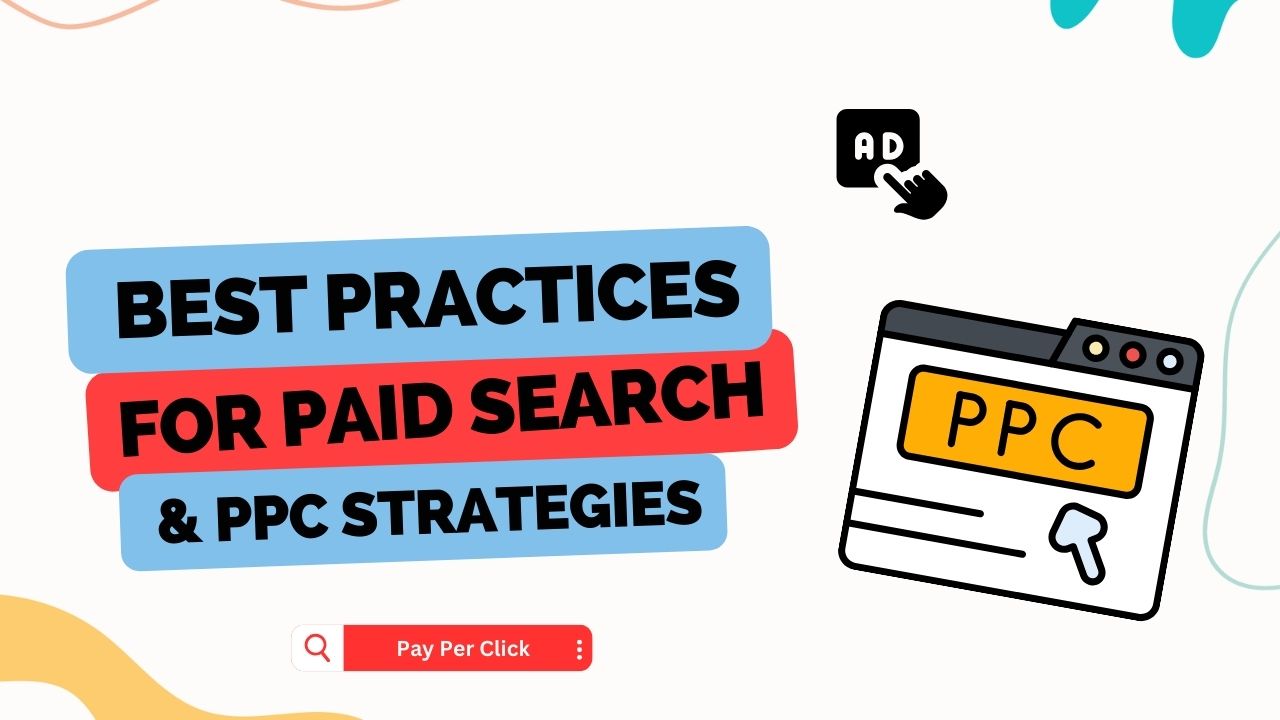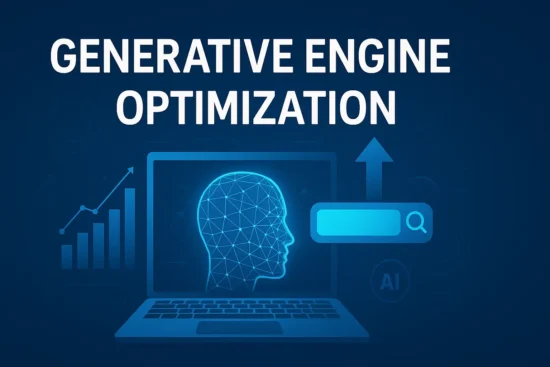
If you are a beginner in the field of paid media or in the process of reassessing your endeavors, it is essential to carefully examine the results and recommended strategies for your overall PPC marketing scheme, individual accounts, and specific campaigns.
Taking another look at your plan paid search presents a chance to guarantee that your approach is in line with your present objectives.
Staying updated on the latest trends and advancements in ad technologies can greatly enhance performance, making it essential to review the best practices for pay-per-click regularly.
During your review, you will discover additional techniques and elements that can be integrated into your paid search campaign.
These 10 PPC best practices can be utilized to adapt and prepare for the upcoming months.
1. Objectives
It is considered a good practice to establish objectives for the marketing program as a whole, as well as for individual ad platforms and campaigns, when creating a plan.
The PPC program is directed by establishing primary and secondary objectives. For instance, the primary aim could be to obtain leads through advertisements.
In addition, it is important to consider secondary objectives, such as increasing brand recognition earlier in the sales process, which can generate interest and eventually lead to sales.
2. Review and Optimization of Budget
There are instances where advertisers become stuck in a routine and fail to assess and reassess the allocation of their paid media budgets.
For optimal use of budgets, take into account the following:
- Regularly compare your planned and actual spend for each account or campaign. Depending on the budget size, this can be done monthly, quarterly, or semiannually, as long as you are able to meet budget goals.
- Evaluate if there are any campaigns that can be discontinued to allocate the budget towards other campaigns.
- Are there opportunities to increase traffic and improve results for successful campaigns? Many ad platforms offer a tool that estimates daily budget based on clicks and costs, giving you an idea of the potential for more clicks.
- If other paid media channels are not performing well, would it be beneficial to redistribute those budgets to other channels?
- Can your company allocate more funds towards successful campaigns in the overall paid search and paid social budget?
3. Explore Different Advertising Platforms
If you have the ability to adjust or expand your budgets, why not consider trying a different advertising platform? Understanding your target audience and their online habits can assist in making an informed decision when selecting ad platforms.
Explore outside of your usual boundaries with Google, Microsoft, and Meta Ads.
Some alternative advertising platforms worth considering for experimentation are:
- LinkedIn: Ideal for targeting professionals and businesses. It is also possible to reach LinkedIn audiences through Microsoft Ads.
- TikTok: Targets a younger audience (16 to 24) from the Gen Z generation, with a focus on video content.
- Pinterest: A platform suitable for promoting products, services, and consumer goods to a female-centric audience.
- Snapchat: Targets a younger demographic (13 to 35) with options for video ads, app installs, filters, and lenses.
For further in-depth insights and additional suggestions, you can refer to the article on the How Can You Do SEO for a Video?.
4. Popular Subjects in Google Ads & Microsoft Ads
In recent times, there have been developments in search and social ad platforms that offer chances to engage with potential customers in a more accurate, innovative, and efficient manner.
Do not neglect experimenting with newer targeting and campaign options that you have not yet explored.
- Video: Planning for goals, targeting, and ad types is crucial when incorporating video into PPC accounts. This provides many opportunities, such as using video in responsive display ads or utilizing YouTube targeting in a more detailed manner.
- Performance Max: This campaign type automatically serves across all of Google’s ad inventory. Recently, Microsoft Ads also launched PMAX, allowing for consistency in campaign types across platforms. It is important to consider budget allocation for PMax campaigns and understand how it compares to search campaigns.
- Automation: While AI cannot replace human strategy and creativity, it can greatly assist in managing campaigns. During the planning process, it is essential to determine which elements to automate, such as utilizing automatically created assets or effectively guiding AI in Performance Max campaigns.
During your search for new features, take a look at a few lesser-known PPC features that you may not be aware of.
5. Reviewing Key Terms
The function of keywords has changed in recent years as match types have become less strict and more open to considering the intent of the searcher.
In the past, [exact match] keywords would only match with the exact search query. However, now ads can also be triggered by search queries that have a similar meaning or intention.
An effective planning activity involves organizing keyword groups and assessing their relevance in representing your brand and offerings.
Analyze the search terms that are triggering advertisements to identify patterns and behaviors that may have been overlooked. This could potentially have had an impact on performance and conversions in the long run.
Crucial for your plan:
- Evaluate the existing keyword guidelines and consider how they may affect your account, such as variations in traffic or changes in close variants.
- Refresh your knowledge of keyword functionality on each platform, as the distinctions are significant!
- Regularly review search term reports for irrelevant keywords that may appear due to changes in match types. Integrate these into match type adjustments or negative keyword lists as necessary.
6. Reflect on Your Target Audience
Take a look at the audiences you have previously chosen, particularly in light of the various types of campaigns that are focused on intent.
One possible way to increase the reach of your audience is by utilizing automated functions. However, it is important to closely monitor performance metrics and on-site behavior after clicks.
Keep in mind that an audience refers to a collection of individuals who are classified based on their interests or online actions.
Hence, there are endless possibilities for combining and targeting different audiences according to the sales funnel.
Below are some chances to discover and experiment with:
- Targeting LinkedIn users: This feature is only available on Microsoft Ads, apart from LinkedIn itself.
- Extensive Demographics: Information such as marital status, parental status, home ownership, education, and household income are available.
- In-market and custom intent: This feature takes into account searches and online activities that indicate an intention to purchase.
- Remarketing: Advertisers can target individuals who have visited their website, interacted with their ads, and watched their videos on YouTube.
Reminder: The frequency of updates for campaign types varies, so it is important to regularly check for updates in your campaign management across all platforms.
7. Data Source Organization
You will probably run campaigns on various platforms, utilizing a mix of search, display, video, and other strategies.
When reflecting on your objectives, what data holds the most significance, and which platforms will you utilize to analyze and present it? Is it possible to obtain the majority of the data from a single analytics platform to facilitate comparison and collaboration?
Google Analytics is a widely utilized tool by numerous businesses as it provides a convenient way to monitor advertising effectiveness, track website activity, and measure conversions.
8. Consider Rethinking Your Reporting Methods
Have you been utilizing the identical performance report for an extended period of time?
Now is the moment to reassess the crucial key metrics for your PPC campaign and incorporate or update that information in your reports.
The objectives for reassessing the reporting are:
- Is the data still in use and applicable?
- Is the data being viewed actionable?
- Are there any additional metrics that should be considered for inclusion?
- How frequently should we review this data?
- Do the recipients of the report comprehend the data visualization being presented?
The following is a paraphrased version of the given text:
The text needs to be restructured in order to eliminate any instances of plagiarism, while still maintaining the same context and meaning. The formatting must also be preserved.
In order to effectively use data for marketing planning, it is important to intentionally and meaningfully incorporate new data. Additionally, it can be beneficial to determine which types of data are worth exploring in depth as necessary.
9. Utilize Scripts as an Option
There is a wide availability of AI suggestions and automated regulations on existing advertising platforms, as well as an abundance of independent resources that can assist with optimization.
Scripts serve as an alternative approach for advertisers who possess sizable accounts or possess proficiency in coding, providing them with the ability to automate the process of report creation and repetitive duties within their Google Ads accounts.
If the world of scripts seems intimidating, an excellent starting point is the post published on Search Engine Journal. It offers a variety of use cases and helpful resources for those looking to begin working with scripts.
Fortunately, a Ph.D. in computer science is not necessary as there are numerous online resources available that offer free or pre-made scripts.
10. Collaborate with Others
A useful strategy for planning is to actively seek support from friendly sources and to consider alternative perspectives.
The expertise and knowledge involved in managing PPC are specific to each person or agency. Therefore, there is a wealth of ideas that can be exchanged between individuals.
For paid ad managers around the world, the Paid Search Association is a valuable resource to discover industry events and establish new connections.
Steps to Achieve Success in Paid Media
It is important to develop strategies that are built upon specific and quantifiable objectives for the business. This allows for a thorough assessment of the progress of your campaigns in light of these updated targets.
When creating your paid media plan, it is important to consider both previous results and potential future possibilities. Take a step back and reassess your current beliefs and methods, while also exploring new platforms, subjects, audiences, and technologies.
Additional sources:
The following is a list of guidelines that can help individuals improve their writing skills:
- Utilize a diverse vocabulary instead of repeating the same words over and over again.
- Use active voice instead of passive voice to make your writing more engaging.
- Vary sentence structure to avoid monotony and add interest to your writing.
- Proofread your work to catch any spelling or grammar errors.
- Seek feedback from others to get a different perspective on your writing.
- Practice writing regularly to improve your skills and develop your own unique style.
- Use credible sources to support your ideas and avoid plagiarism.
- Stay organized and stick to a clear and logical flow in your writing.
- Take breaks while writing to avoid burnout and allow yourself time to revise and edit.
- And most importantly, always strive to communicate your thoughts and ideas clearly and effectively.




Leave a Reply